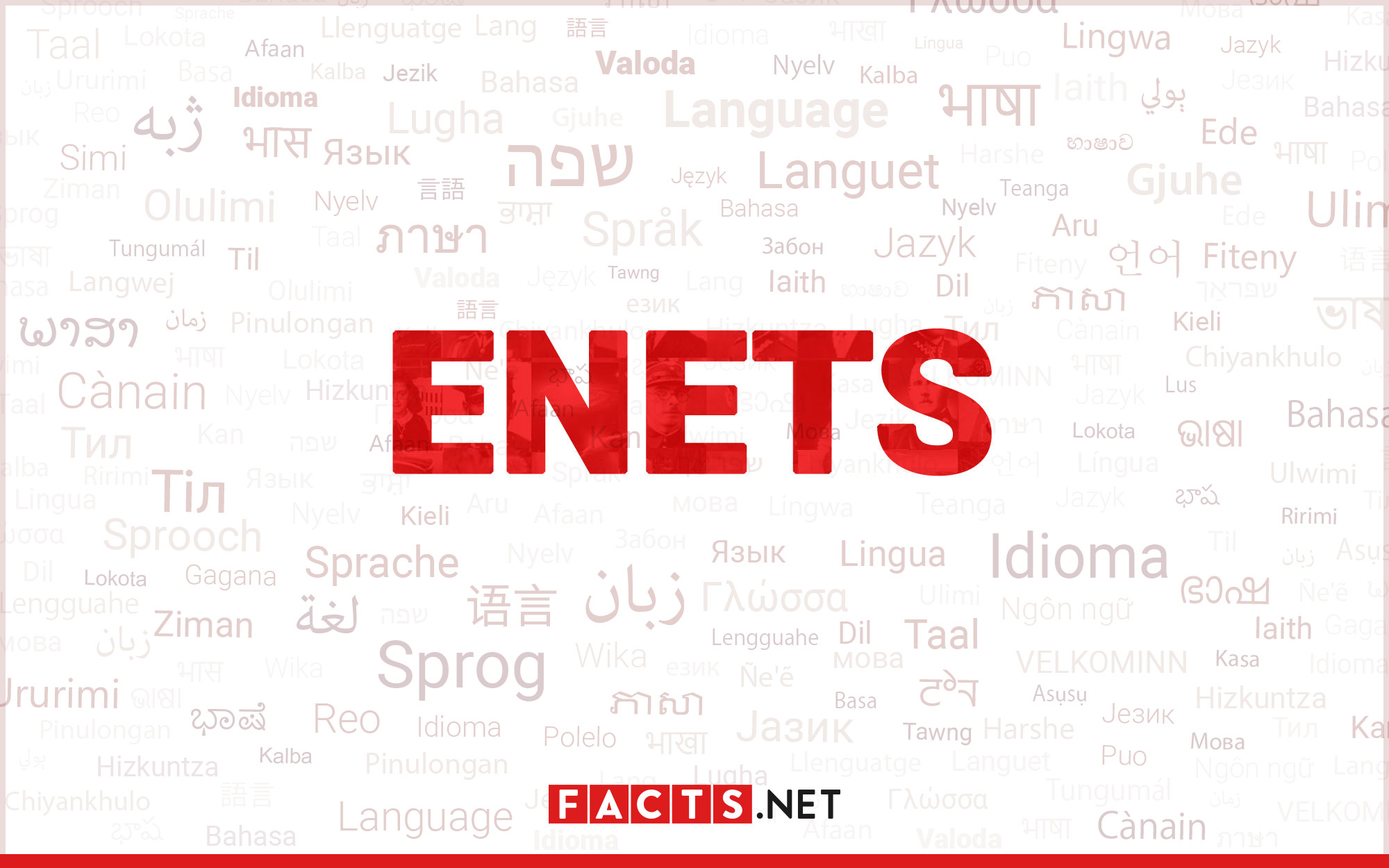
Enets is a fascinating language spoken by the indigenous people of Northern Russia, specifically in the Taymyr Peninsula. Despite being relatively unknown to the world, Enets holds a rich cultural heritage and a complex linguistic structure that reflects the unique identity of its speakers.
In this article, we will uncover 18 unbelievable facts about Enets, shedding light on its history, grammar, vocabulary, and its significance in the modern world. From its endangered status to its connection to other indigenous languages, Enets provides a captivating journey into the depths of linguistic diversity.
Join us as we explore the intriguing world of Enets and discover the hidden wonders that lie within this remarkable language.
Key Takeaways:
- Enets is a rare and endangered language spoken by a small community in Siberia, with a unique writing system and complex grammar, making it a fascinating subject for linguists.
- Efforts are underway to preserve Enets, which is not just a language but also a vital part of the Enets people’s cultural heritage, reflecting their traditions and rich history.
Enets is an endangered Finno-Ugric language.
Enets is spoken by a small indigenous community living in the Taimyr Peninsula in Siberia.
It is classified as a member of the Yeniseian language family.
Enets is closely related to the neighboring Nenets language and shares some linguistic features with other Yeniseian languages.
Enets has a unique writing system.
The Enets writing system was developed in the 1980s and is based on the Latin script. It has specific diacritics to represent distinct sounds.
There are two main dialects of Enets.
The Forest Enets dialect is spoken by those living in the forested regions, while the Tundra Enets dialect is used by the nomadic reindeer herders.
Enets has complex grammatical structures.
The language features extensive morphological inflections and a rich case system, making it fascinating for linguists studying typologically diverse languages.
Enets has a small number of speakers.
Currently, there are only around 30 to 40 native speakers of Enets, making it critically endangered and in urgent need of preservation efforts.
The Enets community is traditionally engaged in fishing, hunting, and reindeer herding.
The Enets people have a deep connection with their natural environment and rely on these traditional activities for their livelihood.
Enets has a complex kinship system.
The language differentiates between various categories of kinship, reflecting the importance of family ties and social relationships within the community.
Enets culture has vibrant oral traditions.
Stories, songs, and myths are passed down through generations, ensuring the preservation of their cultural heritage and folklore.
Enets words often have multiple meanings.
Enets vocabulary is rich in homonyms and polysemous words, leading to subtle nuances and depths of expression in their communication.
Enets has influenced neighboring languages.
Due to historical interactions, Enets has left traces in the lexicons of some other indigenous languages in the region.
Enets has a complex system of numerals.
The language uses a base-10 counting system, and different numeral classifiers are used depending on the type of objects being counted.
The Enets alphabet has evolved over time.
From its initial development in the 1980s, the Enets writing system has undergone modifications and refinements to better represent the language’s phonetic structure.
Enets-speaking communities face challenges in language revitalization.
Due to societal pressures and the dominance of Russian, younger generations of Enets speakers are becoming increasingly bilingual, posing a threat to language transmission.
Efforts are being made to document and preserve Enets.
Linguists and researchers are actively engaged in documenting the Enets language and creating resources to support its revitalization.
Enets is a complex agglutinative language.
Words in Enets can consist of multiple morphemes that are added to convey information about tense, mood, aspect, and other grammatical features.
Enets has distinctive sound patterns.
The language features a variety of consonant clusters, vowel harmony, and distinct phonemic contrasts that make it unique within the Finno-Ugric language family.
Enets is an invaluable cultural heritage.
Enets is not just a language but also a key part of the Enets people’s cultural identity, representing their rich history, beliefs, and traditions.
Conclusion
Enets, a fascinating and lesser-known community, has a rich history and unique cultural practices that are worth exploring. From their nomadic lifestyle to their close connection to nature, Enets people offer a glimpse into a world that is both intriguing and captivating.
Through this article, we have uncovered 18 unbelievable facts about Enets, ranging from their language and traditional occupations to their distinctive clothing and spiritual beliefs. These facts shed light on a culture that is often overshadowed by more well-known communities.
By learning about Enets, we open ourselves up to a broader understanding of humanity’s diversity and the beautiful tapestry of traditions that exist across the globe. Let us celebrate and embrace the knowledge we have gained about Enets and continue to explore the wonders of our world.
FAQs
1. Who are the Enets people?
The Enets are an indigenous community of Russia, primarily residing in the Yamalo-Nenets Autonomous Okrug. They are part of the Samoyedic group and have a distinct culture and language.
2. What is the Enets language like?
The Enets language belongs to the Uralic language family and has several dialects. It is known for its complex grammar and unique phonetics.
3. What are some key aspects of Enets culture?
Enets culture is deeply connected to nature, with a significant focus on reindeer herding, hunting, and fishing. They also have a strong spiritual belief system that emphasizes the harmony between humans, animals, and the environment.
4. How do Enets people traditionally dress?
Enets people traditionally dress in reindeer fur and leather clothing, which not only protects them from the harsh Arctic climate but also represents their connection to their nomadic lifestyle and the reindeer herds they rely on.
5. Are Enets traditions still practiced today?
While the Enets community has faced challenges, such as assimilation and changes in their traditional way of life, efforts are being made to preserve their culture and traditions. Some Enets people still maintain their traditional occupations and participate in cultural events.
6. Can I visit Enets communities?
Visiting Enets communities can be challenging due to their remote locations and limited infrastructure. However, there are tour operators and organizations that arrange trips to indigenous communities in the Russian Arctic, allowing visitors to learn about the Enets’ way of life and culture.
7. How can I learn more about Enets culture?
To learn more about Enets culture, you can explore books, documentaries, and online resources that provide insights into their history, traditions, and current challenges. You can also support organizations that work towards preserving and promoting indigenous cultures.
Uncover more linguistic wonders, from the enigmatic Uralic language Ingrian to captivating indigenous tongues like Mapudungun. Dive into endangered languages with our intriguing exploration of Livonian. Each article offers a unique glimpse into the rich tapestry of human communication, revealing fascinating facts that will leave you marveling at the diversity and complexity of languages around the world. Join us on this journey of discovery as we unravel the secrets behind these incredible linguistic treasures, and gain a deeper appreciation for the importance of preserving and celebrating linguistic heritage.
Was this page helpful?
Our commitment to delivering trustworthy and engaging content is at the heart of what we do. Each fact on our site is contributed by real users like you, bringing a wealth of diverse insights and information. To ensure the highest standards of accuracy and reliability, our dedicated editors meticulously review each submission. This process guarantees that the facts we share are not only fascinating but also credible. Trust in our commitment to quality and authenticity as you explore and learn with us.


